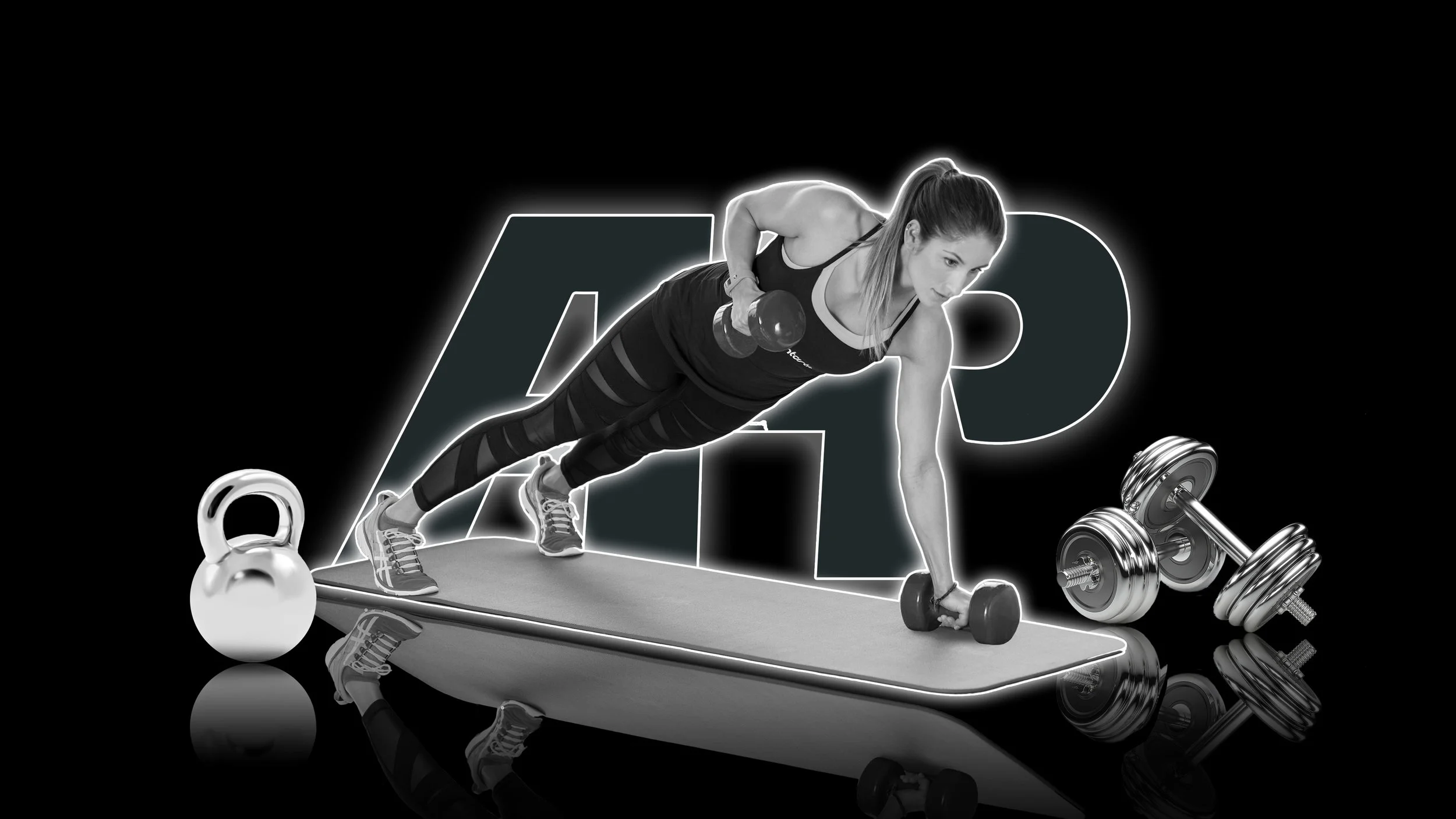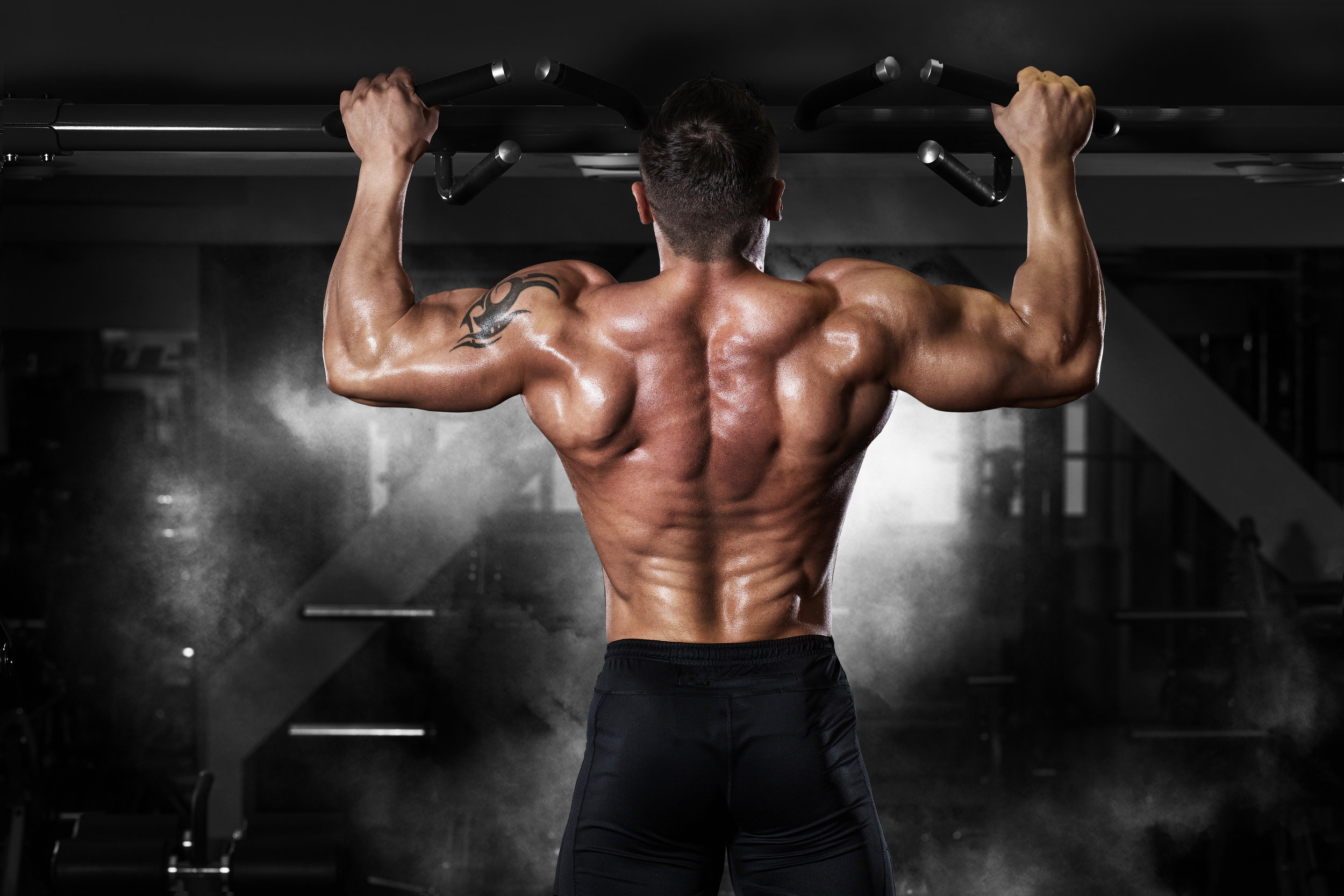The Best Posture & Back Exercise You’re Not Doing: Plank Rows
Dr. Joel Seedman, Ph.D.
When it comes to improving posture, spinal alignment, body mechanics, shoulder health, joint integrity, and overall movement quality, the name of the game is posterior chain. Simply, targeting our upper back, glutes, hamstrings, rear deltoids, and neck muscles can do wonders not only for improving postural mechanics but also for building some ridiculous functional strength and size throughout your physique.
Although there are a number of techniques and exercises I like to employ for targeting the posterior chain, one that I’ve been using more frequently is the plank row and variations thereof. Essentially you’re using two benches to hold yourself up with your arms almost like a reverse plank. I was first introduced to the basic variation of this exercise through expert strength coach Lee Boyce and his article on T-Nation. Since then I’ve experimented with a number of unique modifications, protocols, and variations to further enhance the stimulus. Here’s a quick breakdown of each movement including the overall benefits of the plank row protocol.
Plank Rows
In this 3-part video I have my awesome client and national figure athlete Leslie Petch performing what I consider to be the ultimate pre-exhaustion rowing superset combination by performing a plank row then immediately super-setting it with bent over rows. She and I are also demonstrating a few additional advanced variations in case you’re looking to up the intensity.
Essentially the reverse plank forces the lifter to hold a near maximal effort fully-contracted 90-degree rowing position thereby producing direct upper back stimulation. In essence it takes the arms directly out of the equation thereby minimizing the weak links (biceps, grip, and forearms) forcing the upper back to do all of the work without fatiguing the smaller muscles - something that’s oftentimes quite difficult to do on horizontal pulling/rowing variations.
On a similar note several decades ago Arthur Jones created what many consider to be some of the most effective variable resistance machines ever produced in the strength and conditioning industry via his original Nautilus line. Several of these unique pieces involved rowing and lat pulldown machines where the lifter rowed/pulled the weight from foam elbow pads rather than using their hands to grip the device. This concept also inspired Jones to create the famous pullover machine used by legendary bodybuilders including Mike Mentzer and Dorian Yates.
So what did each of these unique training tools have in common? Direct stimulation to the upper back and lats. Simply, instead of using the smaller muscles of the grip, forearms, and biceps (which have the tendency to fatigue quickly) to indirectly target the lats, the lifter was able to target the larger muscles head on by minimizing the role of the smaller muscles and directly targeting the upper back. Fortunately, this same concept is applied on these plank rows only in an isometric fashion. Read more about direct back stimulation with slingshot rows here.
Besides crushing the entire upper back, lats, rhomboids, middle and lower traps, and rear delts, the plank row is a tremendous exercise for improving postural mechanics and spinal alignment not to mention shoulder imbalances. Additionally by adding the single leg glute bridge on the stability ball this further enhances posterior chain activation as well as core and abdominal recruitment as the lifter will need to be fully dialed in to maintain control and not lose balance.
As you can see in the video, once Leslie activates and fatigues the upper back with plank rows she then moves to one of my favorite rowing variations using a rotational bent over dumbbell row combined with RDL’s. This combo further crushes the upper back and lats however the low back, arms, grip, and forearms, are not the limiting factor (which they oftentimes are) as the upper back will fatigue before anything else thanks to the prior plank row drill pre exhausting the prime movers directly. Additionally the lifter doesn’t have to use as heavy of a load for the bent over rows to produce an adequate hypertrophy stimulus thereby making the bent over rows even more joint friendly than normal particularly on the low back.
On a similar note, many individuals have trouble creating a strong muscle mind connection with their upper back and lats since most upper back movements require the lifter to target their back indirectly by using their arms. Performing plank rows before more traditional rows helps groove the appropriate neural pathways to activate the back as these help create a strong muscle mind connection via direct stimulation. One of the reasons for this is individuals often have difficulty finding the proper biomechanics and joint kinematics associated with horizontal pulling movements. In other words they struggle to set their posture and shoulders in the appropriate position. Fortunately with plank rows its almost impossible to perform them any way except via the correct method as it forces the lifter to retract and depress the shoulders in order to hold the optimal 90 degree position. If you have trouble feeling your upper back and lats activate on rows, these are a surefire remedy.
As for the two advanced variations shown afterwards, the ball variation requires more symmetrical loading between sides as well as motor control and shoulder stability to ensure balance while the single arm single leg version torches just about every muscle from head to toe as it’s just about as advanced as it gets……almost (just keep reading)!!!!!
Hip Thrust Plank Rows
If you really want to enhance the intensity of the plank row drill, try performing these 3 unique but highly advanced variations as shown by my awesome clients and physique athletes Ben Lai and Leslie Petch.
In the first video Ben is demonstrating a double leg plank row hip thrust with a negative accentuated band resisted protocol. Don’t be surprised if your glutes and upper back start to cramp after just a few reps as the intensity of activation to the entire posterior chain from head to toe is enormous.
If that still doesn’t cut it for you, try performing the single leg eccentric isometric variation shown here by Leslie as these take the intensity of the movement several notches further. Read more about eccentric isometric hip thrusts and glutes bridges here.
Lastly, the stability ball hip thrust plank row I demonstrate in the last video requires incredible motor control, core stability, foot and ankle activation, and full body activation to ensure the lifter maintains balance. Additionally, the ball variation requires more symmetrical loading between sides as pressing too much into one arm or the other will cause the lifter to roll to one side and lose his or her balance.
Pull-up Plank Hold: The Ultimate Lat Blaster
The plank row protocol is one of the most effective horizontal pulling variations for isolating the upper back and postural muscles by taking a traditional rowing activation pattern and applying direct stimulation. However, this same concept can just as easily and effectively be applied to pullups and vertical pulling movements as I show in this video using 2 plyometric boxes with a leg raise protocol.
Similar to plank rows, the pullup plank produces incredible activation throughout the upper back particularly in the lats. When performed as a pre-exhaustion superset paired with pullups as I show here, the intensity of lat and upper back activation is through the roof. Furthermore these help ensure that the smaller muscles such as arms, grip, and forearms, are not the limiting factor (which they oftentimes are during pullups) as the lats and upper back will fatigue before anything else thanks to the prior plank pullup drill pre-exhausting the prime movers.
Additionally the levels of intramuscular tension and metabolic stress are inordinately high making these a brutally effective superset for inducing functional strength and hypertrophy. Furthermore, these do wonders for teaching the lifter to produce a strong muscle mind connection with the lats and aggressively fire their upper back muscles rather than solely relying on their arms to perform vertical pulling movements – another common problem during pullups and chinups.
Plank pullups also require the lifter to centrate and pack their shoulder joint while performing a vertical pulling motion as it’s almost impossible to hold the 90 degree position without setting the glenohumeral joint in its appropriate position. For individuals who have a tendency to over elevate and protract the shoulders during pullups these are a sure-fire remedy.
Lastly, most individuals have a tendency to over-pull at the top of pullups and rows. These teach the lifter to find the optimal 90 degree position which happens to represent the approximate optimal stopping point on pullups and rows.
On a side note, you may be asking why not just use leg raise straps to perform these. While the position is similar I’ve found the box plank variation to be exponentially more challenging. That’s because with leg raise straps you have to use your hands and grip to help steady the straps which greatly minimizes overall lat activation. The pullup plank using the boxes remedies this as the lifter has to rely exclusively on their lats to lock in their position.
Plank Row Chest Press: The Impossible Chest Press
I’m not exaggerating when I say this, the plank row chest press is not only the most challenging chest press I’ve ever performed it’s also one of the difficult exercises I’ve ever attempted period. It’s for this reason I nicknamed it the “Impossible Chest Press” as the level of brutality is through the roof. Furthermore this represents the epitome of full body activation.
When combined with a bottoms up protocol these also target just about every biomotor capability in existence including full body stability, motor control, postural alignment, mobility, symmetry, rotary stability, lumbopelvic hip control, foot and ankle activation, shoulder stabilization, core activation, and t-spine mobility.
Here’s how to regress from most basic to most advanced.
1.Double Arm Plank Row (2 benches & one arm on each).
2.Double Arm Plank Row & Single Leg.
3.Single Arm Plank Row & Double Leg.
4.Single Arm Plank Row & Single Leg.
5.Single Arm Plank Row with Dumbbell Press on 2 legs.
6.Single Arm Plank Row with Dumbbell Press on Single Leg.
7.Single Arm Plank Row with Kettlebell Press on Double Leg.
8.Single Arm Plank Row with Kettlebell Press on Single Leg (Impossible Press).
In terms of the execution I’ve found that angling the body slightly from the bench is a bit easier. I recommend starting with the double leg variation using a traditional dumbbell or kettlebell position before moving to the more physically demanding bottoms up protocol.
Once you’ve mastered that version try turning the bench 90 degrees and squaring yourself up so your body is perfectly perpendicular to the bench. Yes, and level of core & hip activation is through the roof.
You’ll also notice how I utilize an eccentric isometric protocol here. There are 2 reasons for this. First, you’re essentially forced to do so as it’s almost impossible to successfully complete these in a controlled fashion without using the eccentric isometric protocol. In fact, one of the goals for many of the exercises I devise is to force individuals to rely on the eccentric isometric protocol. This exercise is no exception.
With that said, even if it weren’t necessary, the other reason why I implement eccentric isometrics is for the enhanced proprioceptive feedback and kinesthetic awareness associated with slow and controlled eccentric muscle actions. In other words, eccentric isometrics help the lifter fine tune their body positioning and movement mechanics by more easily attending to proprioceptive feedback and sensory signals coming from their muscle spindles and central nervous system.Ultimately, this is how one masters their movement - a topic I spent over 600 pages discussing in my latest book Movement Redefined.




























































